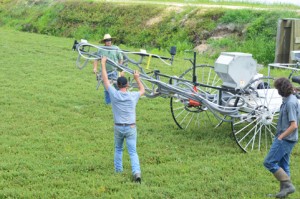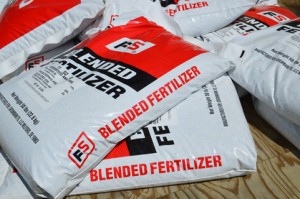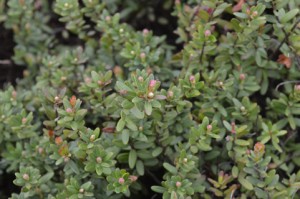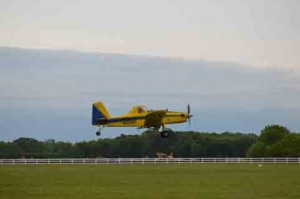We’ve had some unseasonably cold nights but our team has finally been able to start fertilizer application!
The amount of fertilizer we apply to each bed is determined by variety, soil conditions, and past practices, requiring constant evaluation of current conditions, history, and trends. Nutritional needs are also different for young vines as opposed to established plantings. Additional nutrition is necessary because while cranberries have adapted (and thrive) in their native sandy soil, nutrients are taken from the bog through the harvest of fruit.
The three main elements usually added for nutrition are nitrogen, phosphorus, and potassium, and the team bases their decisions on tissue samples, and last year’s yield. According to cranberries.org: “Cranberry plant demand for nitrogen is highest during three stages of the lifecycle critical to cranberry development–early growth, fruit set and bud set. Early growth is when the plant grows vegetatively through vining and root growth and produces a flush of new leaves. Fruit set is when the flower becomes pollinated and fruit begin to form. Soon after fruit set comes bud set when nitrogen is needed for both fruit development and production of the next year’s flower bud.”
“Downstown flew for the first time here this year on Wednesday, so it feels like the growing season has officially started now,” says Mike Haines. “They flew in some fertilizer on some young beds, and also applied some slow release fertilizer to some newer plantings that we wanted to give an extra boost to. Besides that, we are expanding our use of the boom this year, and will be using it to apply fertilizer to the Stump beds, which are new Demoranville beds we planted last year. They were built specifically with the boom in mind, 200 feet across. I’m looking forward to seeing how this goes.”




